Navy Beans Benefits: 9 Science-Backed Health Perks
Add this healthy legume to your daily diet and improve your overall immunity.

Image: Shutterstock
Navy beans are known for their smooth texture. They are one among the 13,000 species of legumes and have a unique creamy white color. The benefits of navy beans can be attributed to their rich nutrition profile. The intake of navy beans may reduce heart disease risk, boost energy, improve memory, aid in diabetes management, and help with weight loss. This post discusses what are navy beans, its many benefits, and how you can take advantage of them. Continue reading to know more.
 Know Your Ingredient: Navy Bean
Know Your Ingredient: Navy BeanWhat Is It?
A variety of common beans native to America.
What Are Its Benefits?
Improves overall skin and heart health, helps treat diabetes, and boosts memory and energy.
Who Can Use It?
Suitable for people who want to lose weight.
How Often?
Half a cup of beans per day.
Caution
Consuming it raw can lead to poisoning.

In This Article

As we saw, navy beans are legumes. And their name comes from the fact that they were a staple in the US Navy back in the 20th century. These beans have a low glycemic indexi Foods that contain slow-digesting carbohydrates and lead to slower and lower increases in blood glucose and insulin levels. (ranging from 27 to 40%), which is good news for diabetics.
 Trivia
TriviaTheir rich nutrient profile makes them exceptionally good for health. Let us take a look at it in the next section.
According to the U.S. Department of Agriculture, 100 g of dry navy beans contain (1):
- Protein: 24.1 g
- Fats: 1.51 g
- Starch: 38.1 g
- Fiber: 4.3 g
- Calcium: 229 mg
- Iron: 5.29 mg
- Magnesium: 180 mg
- Phosphorus: 523 mg
- Potassium: 1470 mg
- Zinc: 3.31 mg
- Copper: 1.14 mg
- Manganese: 2.22 mg
- Sulfur: 244 mg
Navy beans are replete with fiber and other nutrients like manganese and folate. They also contain protein, iron, vitamin B1, magnesium, potassium, and copper. There are other ways these beans can be beneficial for you. Let’s take a look at them now.
Key Takeaways
- Navy beans have nutrients such as protein, magnesium, copper, and vitamin B1.
- They help boost energy, improve memory, and aid in weight loss.
- Navy beans improve skin health and delay the signs of aging.
- They can also manage blood sugar levels and lower the risk of heart disease.
1. Cut Heart Disease Risk
Studies show the intake of navy beans can elevate the levels of good HDL cholesterol (2). The folate in navy beans lowers homocysteine levels – high levels of which lead to heart disease. They are also rich in magnesium, which relaxes the blood vessels and lowers blood pressure.
The fiber in navy beans is another big deal – it lowers cholesterol levels and paves the way for better heart health.
2. Navy Beans Boost Energy
The folate in the beans can be a good source of energy (3). And the fiber, which is so abundant in the beans, helps in converting food into energy efficiently.
3. Improve Memory

The folate the beans contain contributes to brain health and memory in a great way. They also have vitamin B1, which plays a role in cognitive function. This vitamin is crucial for the synthesis of acetylcholine, an essential neurotransmitter. Deficiency of this neurotransmitter can lead to Alzheimer’si A neurologic condition that impairs a person's ability to perform daily tasks due to shrinkage and death of brain cells. and age-related cognitive decline.
Deficiency of folate has also been linked to Alzheimer’s and Parkinson’si A progressive neurologic condition that damages nerves and as a result, causes uncontrollable movement, tremors and stiffness. .
4. Aid Diabetes Treatment
Navy beans aid diabetes treatment in two ways. One, they have a low glycemic index. And two, the fiber in them helps lower blood sugar levels. The protein in fiber also helps in this regard – it keeps blood sugar levels in check and eliminates fatigue that plagues individuals with high blood sugar levels.
The fiber in the beans also keeps you satiated – which means you won’t be eating as much as you did before. This can mean less intake of carbohydrates and consequently less glucose in the bloodstream.
5. Navy Beans Can Aid Weight Loss

Beans are low in calories and high in fiber, which is why they can be a great addition to a weight loss diet. The proteins and resistant starch they contain also aid digestion, control appetite, and discourage overeating – ultimately contributing to weight loss.
6. Helps In Bodybuilding
Navy beans are great sources of protein and fiber – two bodybuilding essentials.
Fiber helps with weight management. It also maintains proper insulin response, which is important for muscle growth. Fiber also helps in the absorption of various nutrients that are often ingested by bodybuilders.
7. Can Improve Skin Health

The copper in the beans acts as an antioxidant and boosts skin health. It fights free radicals that can otherwise cause signs of premature aging.
8. May Reduce Cancer Risk
The consumption of black and navy beans has been associated with a reduced risk of colon cancer (4). These beans, being high in fiber, aid digestion and regular bowel movements, which may consequently lower the risk of colorectal cancer. They also have antioxidants that may contribute to similar benefits. Further studies are ongoing for a deeper analysis and understanding of the role of navy beans in this aspect.
9. Helps Regulate Metabolism
Dietary navy beans may help regulate your metabolism. Research shows that regular consumption of canned navy beans significantly reduces obesity-related metabolic risk factors (5). This may also play a part in further alleviating other obesity-related health conditions.
These are the major ways navy beans can make your life easier. Simply include them in your diet, and you will only thank yourself. And yes, talking about that – how do you cook navy beans?

If you are using canned beans, ensure they are properly rinsed and drained before use.
And if you are using dried beans, soak them before you use them in cooking. You can rinse the beans, cover them with an inch of cold water and let them soak at room temperature for an entire night. Drain and rinse before using.
Soaked beans usually cook for about 60 minutes. You can use three cups of water for each cup of uncooked beans. You may also season the beans to make them taste good – add bay leaves or garlic cloves or herb sprigs to the cooking water. You can also add a pinch of salt to the beans while cooking to enhance their flavor further.
We have one popular recipe for you. Let’s check it out!
Navy Bean Soup
What You Need
- 1 16-ounce pack of dried navy beans
- 6 cups of water
- 1 chopped onion
- 2 chopped celery stalks
- 1 can of diced tomatoes
- 1 minced garlic clove
- 1 tablespoon of dried parsley
- ½ pound of chopped ham
- 1 cube of chicken bouillon
- 1 teaspoons of garlic powder
- 1 bay leaf
- 1 teaspoon of salt
- 3 cups of water
- ½ teaspoon of ground black pepper
- 2 tablespoons of Worcestershire sauce
Directions
- Combine all the ingredients, except for the salt and pepper, in a stockpot. Lower the heat and cover and simmer for about 2 hours.
- Now, add a little more water. Season with the salt and pepper and simmer for two more hours. You can discard the bay leaf.
You can also include navy beans in your evening salad.
Kathy Sheehan, a blogger, shares a cherished family recipe, navy beans and ham, that holds sentimental value. She says, “I remember spending the night at my grandmother Gaga’s apartment (fondly called “the pink palace”) where we would share a warm, comforting meal of her delicious navy beans and ham soup (i).”
 Quick Tip
Quick TipDespite navy beans, being so nutritious, the market is won over by kidney beans and black beans. Let us compare them in the next section.
The following table will give you a nutritional comparison of navy, kidney, and black beans. Check it out (1) (6) (7):
| Nutrient | Navy Beans (100 g) | Kidney Beans (100 g) | Black Beans (100 g) |
|---|---|---|---|
| Protein | 24.1 g | 25. 9 g | 24.4 g |
| Fat | 1.51 g | 1.31 g | 1.45 g |
| Fiber | 4.3 g | 4.3 g | 4.2 g |
| Calcium | 229 mg | 98 mg | 191 mg |
| Iron | 5.29 mg | 6.58 mg | 5.34 mg |
| Magnesium | 180 mg | 164 mg | 180 mg |
| Phosphorous | 523 mg | 612 mg | 522mg |
| Potassium | 1470 mg | 1490 mg | 1540 mg |
| Zinc | 3.31 mg | 3.29 mg | 3.37 mg |
| Copper | 1.14 mg | 0.865 mg | 1.12 mg |
| Manganese | 2.22 mg | 1.67 mg | 2.08 mg |
| Sulfur | 244 mg | 241 mg | 244 mg |
The comparative table suggests that all these bean varieties have similar nutritional values. There is no significant difference in their nutrient content, making them all equally beneficial for a balanced diet. Navy beans stand out with slightly higher calcium content compared to kidney and black beans, while kidney beans offer a bit more iron. In terms of fiber, protein, and other micronutrients, all three varieties provide comparable amounts. So, you can easily choose among them based on your flavor preference and availability.
uring the mid-18th century, US Navy sailors actively and extensively used navy beans, earning them their name. These beans were popular due to their high nutritional value, affordable cost, and ease of storage. They are rich in nutrients that greatly benefit your health. Check out the infographic below to learn the top benefits of eating navy beans.

Illustration: StyleCraze Design Team
Navy beans are highly nutritious legumes and make for a healthy addition to your diet. Low in calories and high in fiber, proteins, and minerals, these beans may promote satiety. They are a good option to add to your weight loss diet or improve your cardiovascular health and overall immunity. Additionally, they may help with cancer prevention and promote bone health. However, there are no human studies to support this claim. With a low glycemic index, navy beans help regulate your blood sugar levels as well. Canned beans should be rinsed before use while the dry ones need to be soaked well before cooking to get the most of navy beans’ benefits. Soups, salads, or stews, navy beans make for a tasty and versatile addition to your diet.
Frequently Asked Questions
What are the side effects of eating too many navy beans?
Since navy beans are rich in fiber, eating too many of them can cause cramping – as the fiber remains undigested in the gut. These beans can also cause flatulence, diarrhea, and constipation.
How many navy beans can you eat in a day?
Eating about half a cup of the beans should suffice. Not more.
What is a good substitute for navy beans?
You can substitute navy beans with any other white beans. These include flageolets, white kidney beans, great northern beans, and cannellini beans.
Can you eat raw navy beans?
NO. Beans contain lectins, and these are toxic when the beans are raw or undercooked.
Where can you buy navy beans?
You can get them from your nearest supermarket or online.
Are navy beans anti-inflammatory?
Yes, beans have fermentable nondigestible compounds and phenolic compounds with anti-inflammatory and antioxidant properties that may help reduce colonic inflammation (8).
Are navy beans good for your liver?
Yes. Bean consumption has been associated with a lower risk of nonalcoholic fatty liver (9).
Do navy beans have estrogen?
There is currently a lack of evidence that suggests that navy beans have estrogen.
Which is healthier: navy beans or kidney beans?
Navy beans and kidney beans are cultivars of the common bean (Phaseolus vulgaris). Hence, both beans have a similar nutritional value and can be substituted for each other (1), (6).
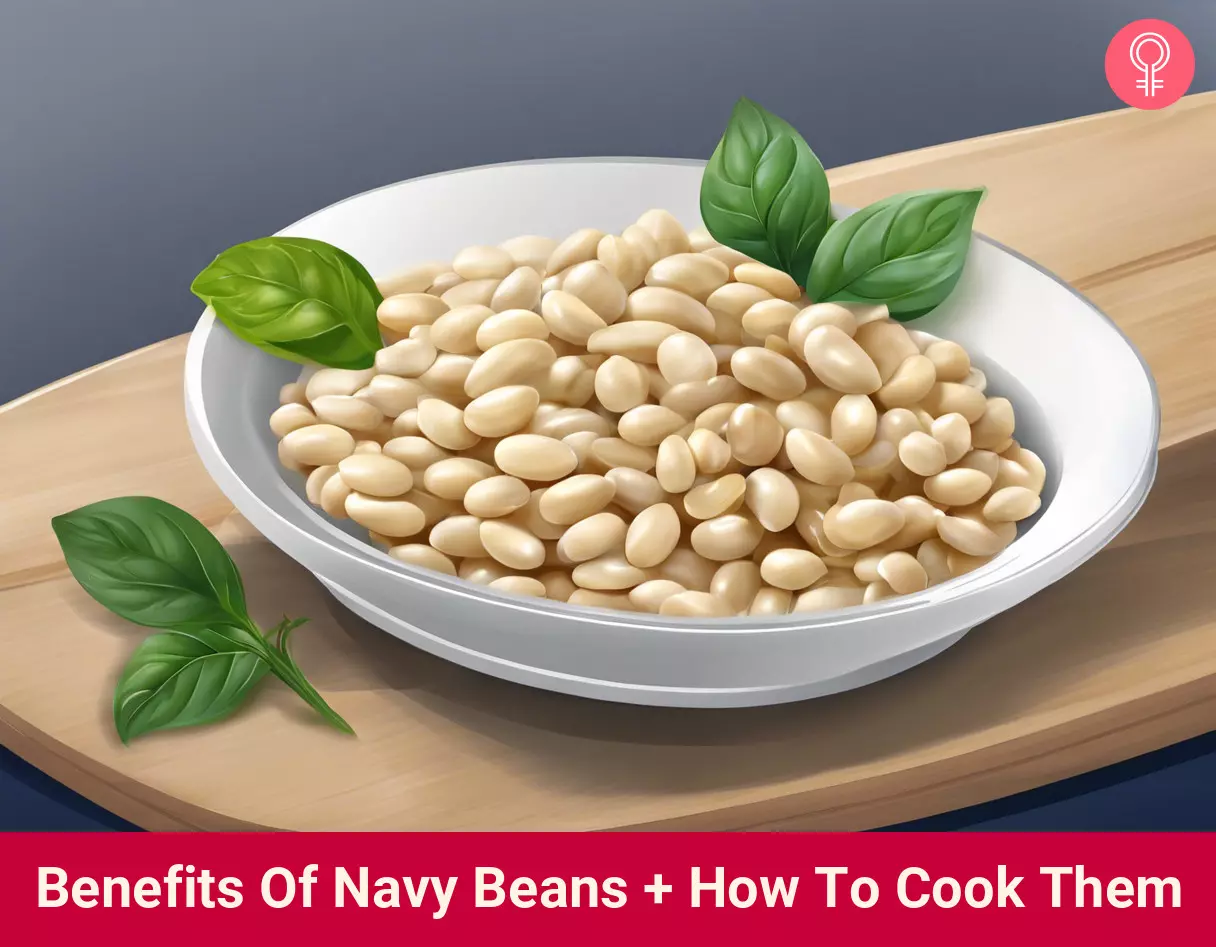
Image: Stable Diffusion/StyleCraze Design Team
Eating navy beans may actually help you lose weight. Watch this informative video and learn how to incorporate it into your diet for the best results.
Personal Experience: Source
StyleCraze's articles are interwoven with authentic personal narratives that provide depth and resonance to our content. Below are the sources of the personal accounts referenced in this article.
i. Navy Beans and Hamhttps://diabeticsrejoice.blogspot.com/2010/02/navy-beans-and-ham.html
References
Articles on StyleCraze are backed by verified information from peer-reviewed and academic research papers, reputed organizations, research institutions, and medical associations to ensure accuracy and relevance. Read our editorial policy to learn more.
- “Beans, Dry, Navy” Food Data Central.
- “A pilot randomized controlled clinical…” US National Library of Medicine.
- “B Vitamins and the Brain…”. US National Library of Medicine.
- “Consumption of black beans and navy beans (Phaseolus vulgaris) reduced azoxymethane-induced colon cancer in rats”, US National Library of Medicine
- “Canned Navy Bean Consumption Reduces Metabolic Risk Factors Associated with Obesity”, US National Library of Medicine
- “Beans, Dry, Dark Red Kidney…” Food Data Central.
- “Beans, Dry, Black” Food Data Central.
- “Cooked navy and black…” US National Library of Medicine.
- “Legume intake and risk of…” US National Library of Medicine.
Read full bio of Anna Jones
Read full bio of Ravi Teja Tadimalla
Read full bio of Arshiya Syeda
Read full bio of Sindhu Koganti







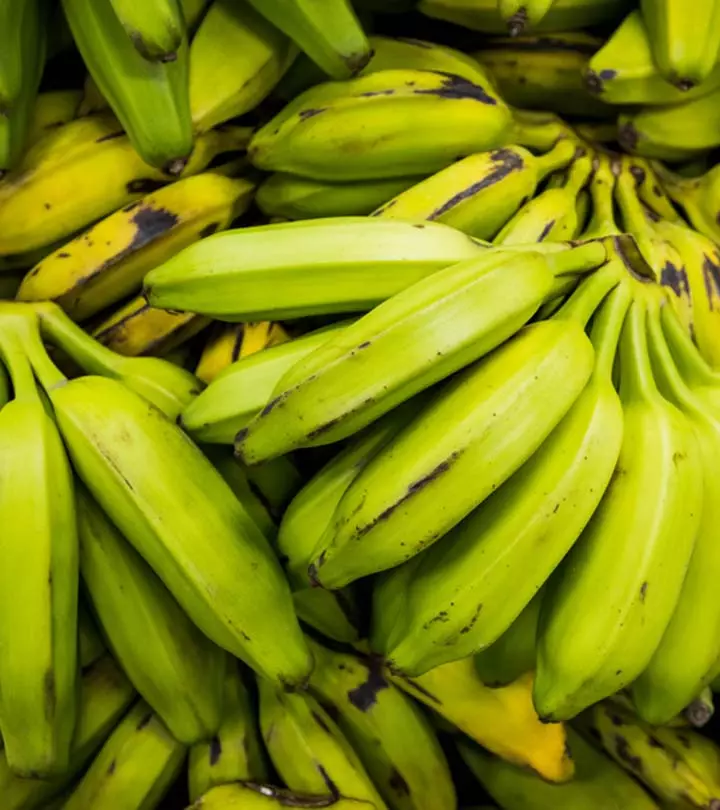
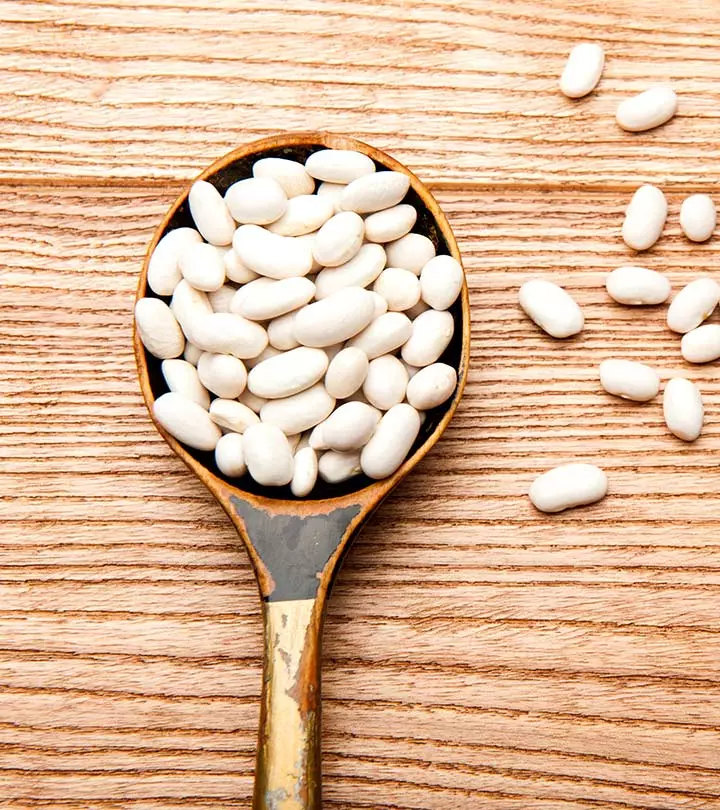


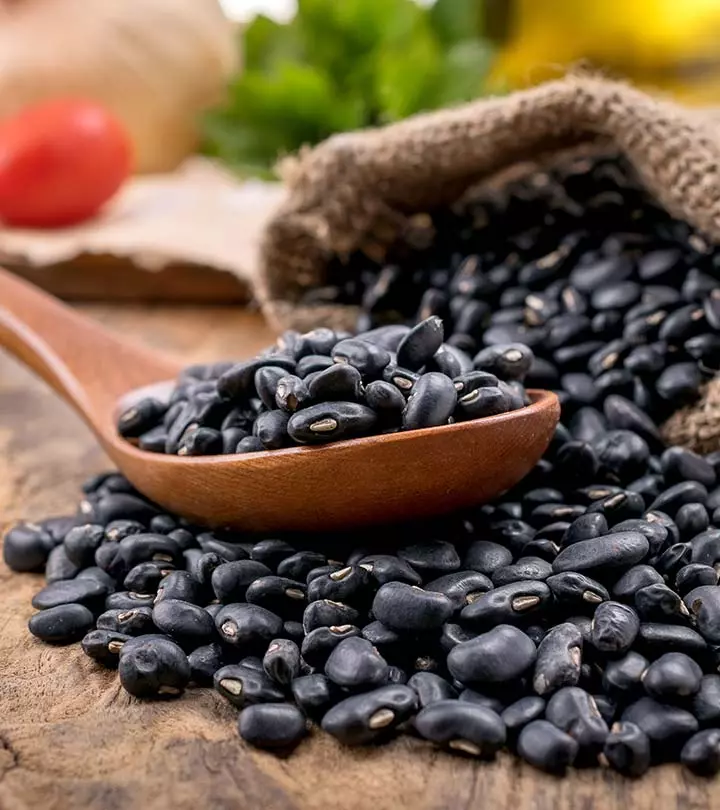

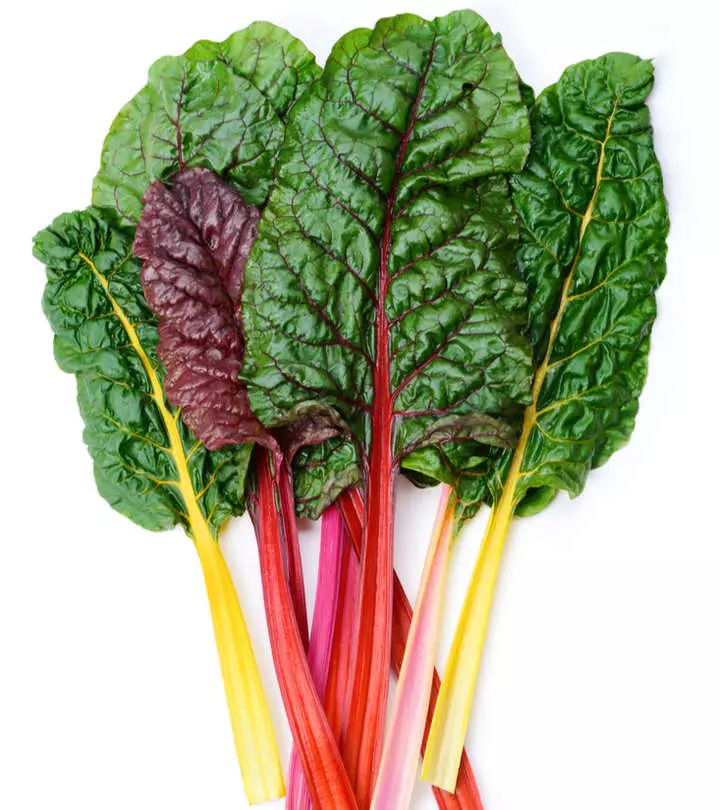



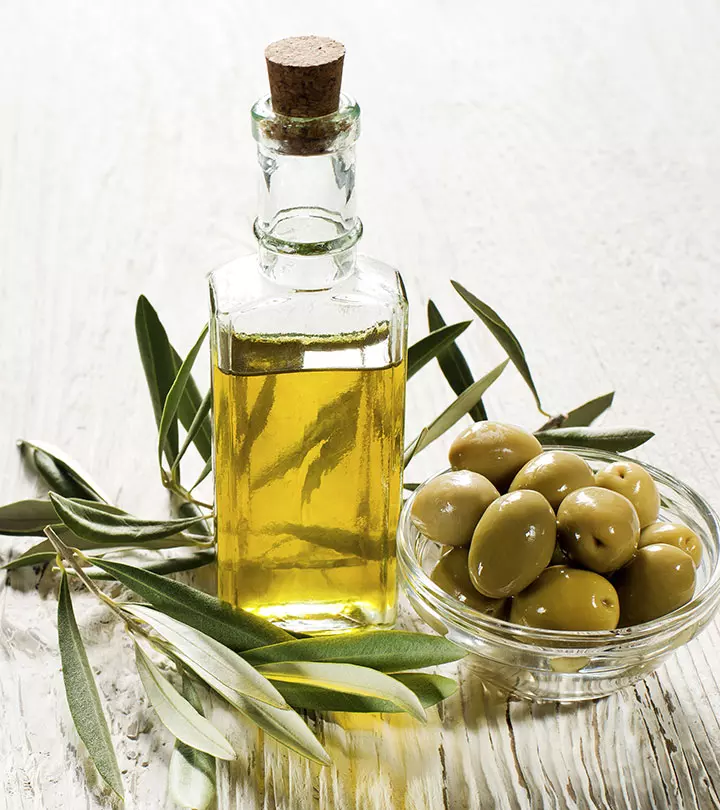
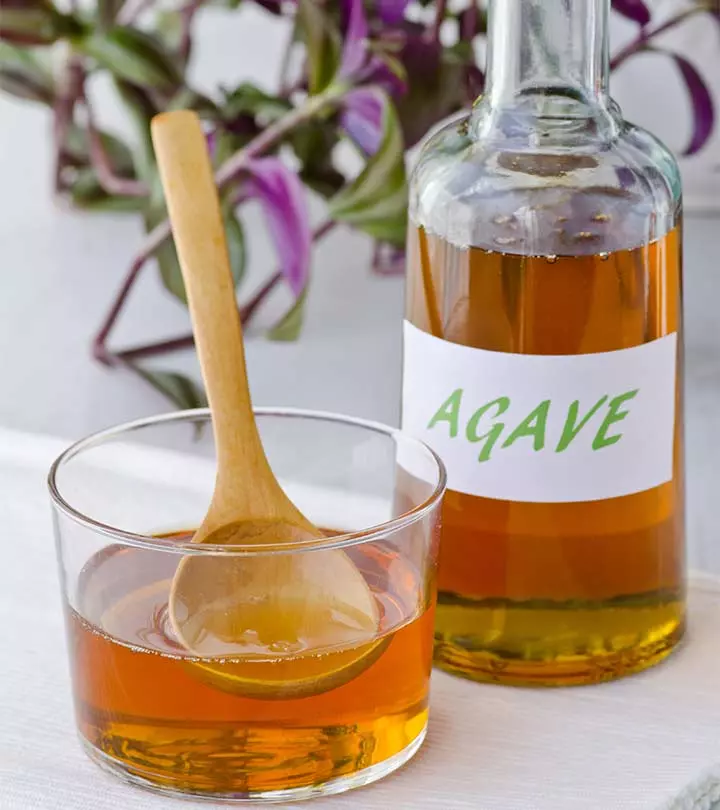


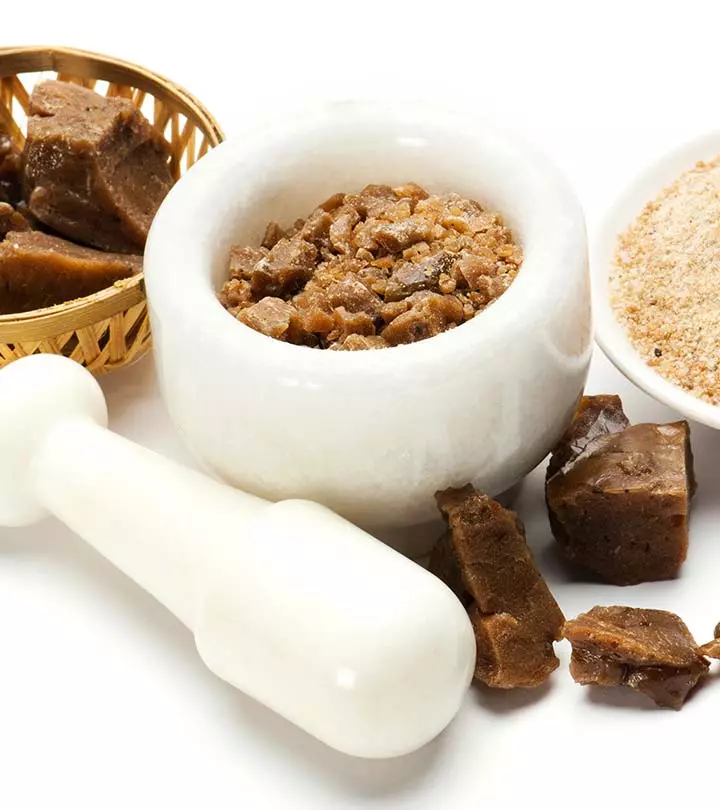






Community Experiences
Join the conversation and become a part of our empowering community! Share your stories, experiences, and insights to connect with other beauty, lifestyle, and health enthusiasts.